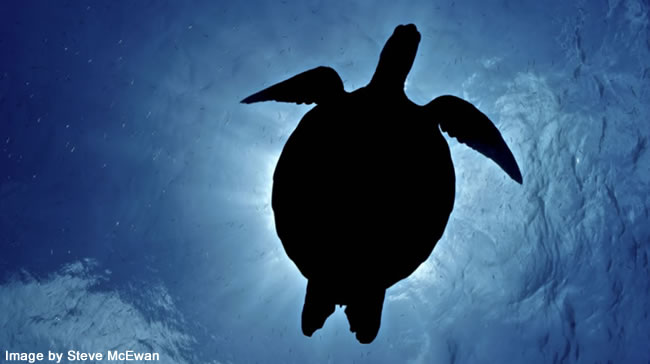
Fewer turtles not a concern
Wednesday 12 December 2012
Fewer turtles not a concern

Scientists are seeing a predicted low number of marine turtle nesting this summer due to the extreme weather last summer, but the Environment and Heritage Department (EHP) says this year’s drop in nesting numbers is nothing to worry about.
Dr Col Limpus, EHP Chief Scientist (Threatened Species), said green turtle numbers were well down on Raine Island off Cape York Peninsula.
“In the past few years we saw more than six thousand turtles come ashore each night at Raine, but researchers there this month are seeing only two or three hundred turtles a night,” Dr Limpus said.
“We expect one of the lowest green turtle seasons in the last four decades, since detailed monitoring started in Queensland, but we are not concerned.
“This dip in turtle breeding is now a well-known natural consequence of weather."
Dr Limpus said it has been established that the size of the green turtle breeding population is a function of the climate cycle about 18 months before a breeding season.
“A strong El Nino year, with droughts and reduced cyclones, is followed by massed turtle nesting 18 months later, while a strong La Nina year of floods and increased cyclones is followed by very reduced breeding numbers 18 months later.
‘Staff from EHP and the Australian Bureau of Meteorology first published their collaborative research on this phenomenon in the 1980s.
“So we were expecting this season to be quiet. We also predicted the major increase in sick and dead turtles after the cyclones and floods, due to impacts on algae and seagrass – their marine pastures."
He said researchers are also seeing reduced numbers of loggerhead turtles nesting at Mon Repos and Agnes Water and fewer flatbacks at Mon Repos, Curtis Island and Mackay, adding it is still early in the nesting season for those species.
“We are not concerned by the drop. It doesn’t necessarily represent a significant change to the conservation status of our turtles. It’s a response to climate variability and is within the normal function of these long-lived species.
“We have seen it before, after the floods in the 1970s, when green turtle breeding dropped right off for four years.
“We’ll continue to monitor the index breeding sites over this summer and the foraging sites in 2013,” Dr Limpus said.